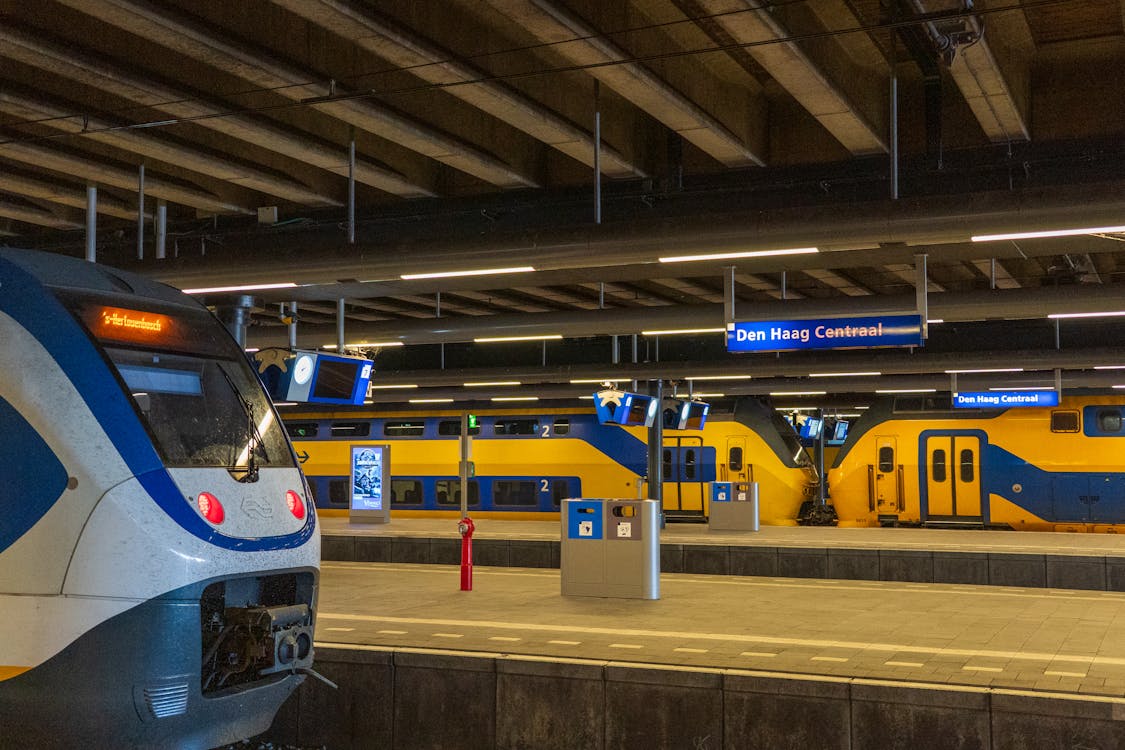
Urban transport has constantly been a challenge. Between expanding populations, restricted infrastructure, and the climbing demand for benefit, cities are frequently searching for methods to enhance how people and lorries relocate. Get in artificial intelligence. Once viewed as a distant concept booked for science fiction, AI is currently at the core of some of the most amazing shifts in contemporary city life. And it's not just about self-driving vehicles-- it's concerning smarter systems, safer roads, and better planning for everybody that shares the roadway.
From Reactive to Predictive: The New Urban Mindset
Cities used to run reactively. A traffic control malfunctions? A person fixes it. Does a bus route end up being overcrowded? Coordinators modified it months later on. But with AI, this timeline has turned. Sensors placed at intersections, transportation centers, and busy roads feed real-time information into AI-powered systems that can not only respond immediately but also anticipate what's following.
Envision a system that knows when and where congestion will construct before it even takes place. That's no more a fantasy. By examining patterns in time, like pedestrian traffic, climate condition, and event routines, AI designs help cities stop traffic jams rather than simply responding to them.
Smarter Traffic Signals and Intersection Management
Among the most obvious improvements AI has offered city transport remains in the way traffic lights operate. Typical signal systems work on timers or straightforward sensing units. However AI can evaluate real-time video, spot lorry quantity, and adapt light cycles on the fly. This shift lowers unneeded idling, boosts gas efficiency, and-- possibly most notably-- reduces commute times.
Some cities have actually begun to couple AI-powered cameras with traffic lights to find not just lorries, however pedestrians and bicyclists also. This enables signals to readjust for vulnerable road individuals, enhancing safety and security without decreasing general website traffic flow.
Public Transit Gets a High-Tech Upgrade
Buses and trains are crucial lifelines in a lot of cities. Yet delays, route inadequacies, and upkeep concerns typically discourage bikers. That's starting to transform with the help of AI.
Transit agencies are currently using anticipating analytics to manage fleets much better. If a bus is running behind schedule, AI can suggest course modifications, alternative pick-up points, or perhaps reassign lorries in real-time. Maintenance is also much more aggressive; AI recognizes early warning signs before parts fail, which maintains lorries when traveling and riders promptly.
When mass transit is consistent and reputable, even more individuals utilize it. And when more individuals make use of public transportation, cities come to be greener, much less stuffed, and much easier to browse.
Redefining Parking with Smart Systems
Discovering a vehicle parking place in a city can be the most aggravating part of driving. It's lengthy, stressful, and frequently inefficient. However AI is currently altering the method cities handle car parking management.
Electronic cameras and sensing units set up in parking area and garages track readily available rooms and send out updates to central systems. Chauffeurs can then be led to open up places with navigating apps or in-car systems, lowering the moment they invest circling around the block. Consequently, this cuts exhausts and makes city roads less crowded.
Some AI systems are also with the ability of vibrant pricing, changing car parking charges based on demand in real time. This dissuades overuse in jampacked zones and encourages turnover, giving every person a fairer chance at finding a space.
In densely booming areas where room is limited, specialized remedies like boat storage in Philadelphia and specialized Philadelphia car storage alternatives are coming to be better than ever. AI can aid handle these facilities, making certain optimum use and improving protection via wise security systems that find uneven activity.
The Rise of Autonomous Vehicles and Ridesharing Intelligence
While self-driving automobiles might not yet control the roadways, they're most definitely affecting the direction of urban transportation. AI is the foundation of autonomous automobile technology, taking care of every little thing from navigating to challenge discovery and action time.
But also before full freedom holds, AI is already transforming ridesharing solutions. Algorithms assist pair travelers much more successfully, lower wait times, and advise calculated locations for vehicle drivers to wait between fares. With time, these insights will help in reducing traffic congestion and enhance vehicle tenancy prices throughout cities.
There's also been a rise in AI-enhanced mini flexibility options like mobility scooters and bike shares. These services are handled by AI systems that track use patterns, predict high-demand areas, and even find upkeep demands instantly.
Planning the Future: AI and Urban Design
City planners currently have an effective brand-new ally in artificial intelligence. With accessibility to huge datasets-- every little thing from traveler habits to air quality levels-- AI devices can model the influence of framework changes prior to they're even made. This indicates better choices about where to put bike lanes, just how to enhance bus routes, or whether to develop new bridges and passages.
Urban developers can additionally make use of AI to design the result of brand-new zoning legislations or domestic development on transportation systems. This causes smarter growth that supports activity rather than overwhelming it.
In places with dense development and restricted real estate, wise solutions like vehicle storage in Philadelphia are proving to be critical aspects in long-term preparation. AI can improve room allowance, track usage patterns, and help create storage designs that optimize capacity while decreasing footprint.
Much Safer Streets Through Real-Time Intelligence
AI is not just about speed and performance-- it's also regarding safety and security. From identifying speeding lorries in real time to predicting accident-prone zones, AI is aiding make roads safer for everybody.
Smart security systems powered by machine learning can discover unsafe behavior, such as illegal turns, running red lights, or jaywalking. These systems do not simply work as deterrents; they generate data that cities can use to notify future security efforts.
AI is additionally aiding initial responders get to emergency situations much faster. Real-time traffic analysis can assist ambulances along the quickest course, also throughout heavy traffic. And when secs matter, those time savings can be life-changing.
A More Connected and Adaptable Transportation Future
The genuine power of AI in metropolitan transport depends on its capability to adapt. As cities progress, AI progresses with them. Whether it's replying to an unexpected rise in web traffic after a sports event, predicting flooding on significant official source roadways, or taking care of a spike in seasonal traveling, AI is there, regularly finding out and changing.
By weaving AI right into the material of transportation systems, cities are coming to be much more smart, much more responsive, and more easy to use. These changes may not constantly show up to the daily traveler, but the advantages-- much shorter journeys, safer streets, and much more reputable transportation-- are felt every day.
For those navigating metropolitan life today and looking toward the future, it's clear that artificial intelligence is no longer just helping with transportation-- it's redefining exactly how our cities relocate.
Ensure to adhere to the blog site for even more understandings right into how modern technology is shaping metropolitan life, and examine back on a regular basis to stay ahead of the curve.
 Danny Tamberelli Then & Now!
Danny Tamberelli Then & Now! Luke Perry Then & Now!
Luke Perry Then & Now! Kelly Le Brock Then & Now!
Kelly Le Brock Then & Now! Brooke Shields Then & Now!
Brooke Shields Then & Now! Catherine Bach Then & Now!
Catherine Bach Then & Now!